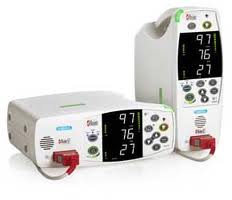CO-oximeter

A cooling vest, also known as an ice vest or 'precool vest', is a garment
worn to lower a person's body temperature. These vests find application
among various groups including athletes, industrial workers, medical
professionals, service animals, individuals with Multiple Sclerosis or
Hypohidrotic ectodermal dysplasia, as well as military pilots and tank
crews.
For Olympic athletes, lightweight body cooling vests serve as a means to
pre-cool before events. In preparation for the 2008 Beijing Olympics, Nike
introduced the Nike Precool Vest tailored for Olympic competitors. Designed
to be worn an hour prior to events in the hot and humid conditions of
Beijing, Nike projected a potential 21% increase in an athlete's endurance.
Subsequent research corroborated these claims of enhanced performance.
During the 2004 Athens and 2008 Beijing Olympics, the lightweight Arctic
Heat cooling vest saw widespread use.
Cooling vests vary in weight, ranging from approximately two to eight
pounds, contingent upon the specific model. While the Nike variant remains
exclusive to athletes, numerous commercial alternatives with diverse weights
and price points are accessible. Examples include the RiteTemp Performance
Vest and Hyper Precool Vest, which incorporate standard cooling gel packs or
phase change material, enabling wearers to engage in full warm-up activities
while maintaining contact with the body. Various cooling mechanisms are
employed in these vests, such as the adiabatic expansion of compressed air,
capable of sustaining worker comfort in extreme heat conditions for extended
durations. Typically, such vests can reduce air temperature by around 25 °F,
with an average flow rate of approximately 5 cubic feet per minute.
Alternatively, some vests combine neoprene with frozen gels to create a cold
compression therapy vest, penetrating deep into soft tissues to rapidly
lower core body temperature. Chemical packs are also utilized in certain
designs, although most vests function primarily as heat sinks, conducting
heat away from the body through conduction. Moreover, certain vests
incorporate a layered cooling module system to ensure prolonged cooling
without sacrificing flexibility.
The functionality of cooling vests bears resemblance to Liquid Cooling and
Ventilation Garments utilized by astronauts.
Additionally, cooling vests serve as a crucial tool for individuals
grappling with multiple sclerosis (MS). In MS, demyelination of nerve fibers
heightens sensitivity to elevated temperatures, resulting in pain and
discomfort. Cooling vests help regulate body temperature, alleviating
symptoms and promoting comfort, particularly in instances where nerve fibers
are undergoing repair or remyelination.
undo Medical Equipment